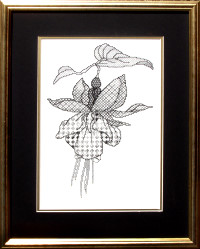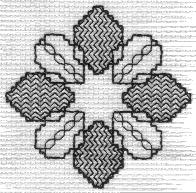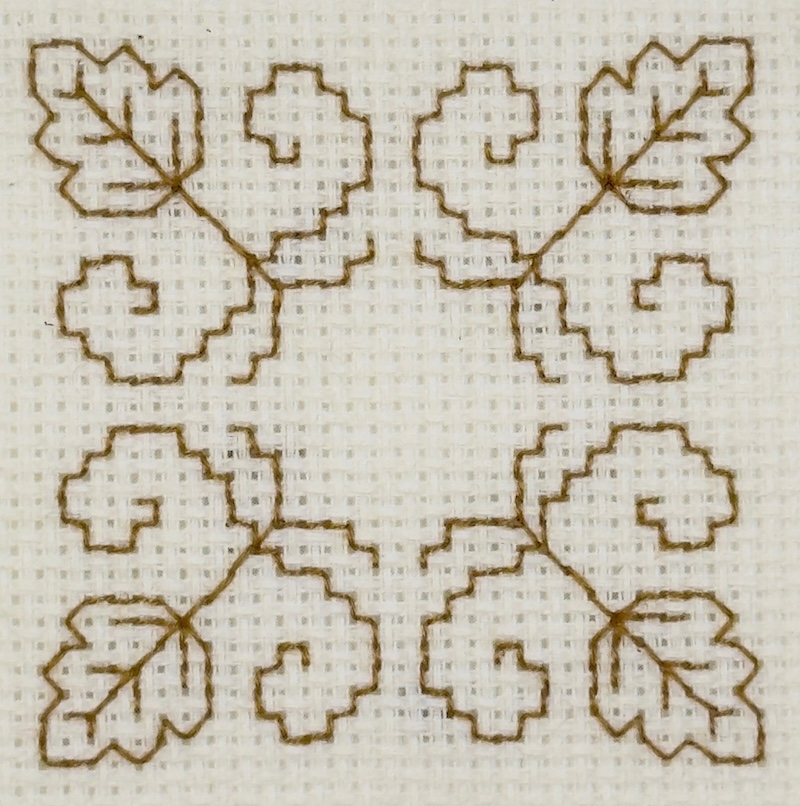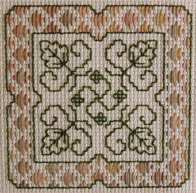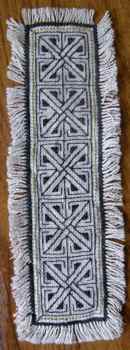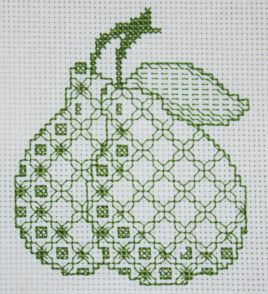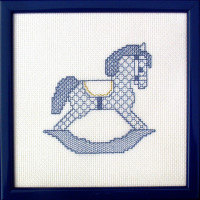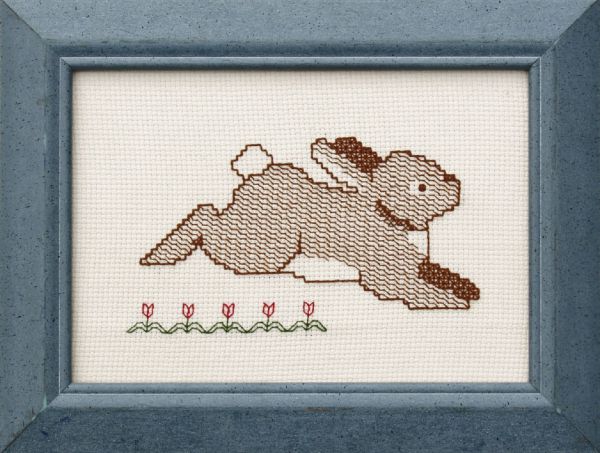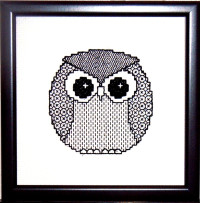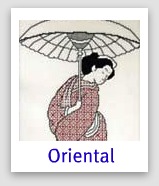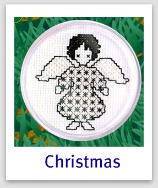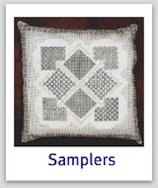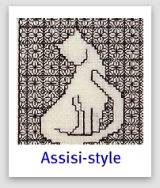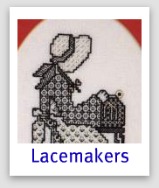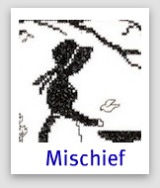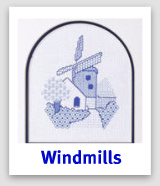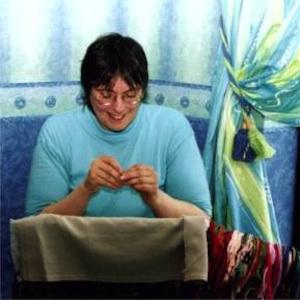- Home
- Intro to blackwork
Try Blackwork Embroidery: Simple Steps to Stunning Designs
Want to create stunning geometric patterns with just a needle and thread?
Blackwork embroidery turns simple stitches into intricate designs that look far more complex than they actually are.
You'll be surprised how quickly you can master this centuries-old technique that adorned Tudor royalty.
What is Blackwork Embroidery? A beginners Guide
You've probably seen those striking black-on-white embroidery patterns on historical costumes in period dramas - that's blackwork, a Renaissance-era technique with royal connections.
Originally adorning the collars and cuffs of Tudor nobility, this distinctive counted thread embroidery created geometric patterns that looked as perfect on the inside as they did on the outside.
The Spanish influence gave it an exotic appeal in 16th century England, making it a status symbol among the well-dressed elite.
Already a fan of blackwork? Check out my downloadable patterns
Blackwork Embroidery History - From Tudor England to Today
Did you know the elegant embroidery adorning Tudor royal portraits was actually born from budget constraints?
Blackwork, popularly called "poor man's lace" in the 16th century, allowed common folk to mimic expensive lace designs without the royal price tag.
The double running stitch, or Holbein stitch, forms the backbone of this technique, taking its name from Hans Holbein, the artist who meticulously captured these intricate patterns in his paintings of Tudor nobility.
Want to try this historical technique yourself? Check out my detailed guide on how to do the double running stitch which is one of the most popular blackwork embroidery stitches.
Why Try Blackwork? Benefits & Modern Uses
Blackwork offers a unique way to create stunning geometric patterns and intricate designs using simple straight stitches.
Its versatility allows for adaptation to suit both traditional and modern styles, making it a favourite among stitchers.
Explore the variety of repeating patterns and how to stitch them with simple diagrams.
How to Get Started with Blackwork Embroidery (Step-by-Step)
To begin your blackwork journey, you'll need a few basic supplies:
- Fabric: Even-weave fabrics like Aida cloth or linen are preferred.
- Threads: Traditional black silk or modern coloured threads, metallics, and beads for embellishment.
- Needles: Tapestry needles with blunt tips are ideal.
- Hoops: An embroidery hoop or frame helps maintain even tension.
Click on the cards below for more information on each.
Tips for Success
- Start with simple designs and gradually move to more complex patterns.
- Experiment with different threads and colours to find your unique style.
Blackwork for Beginners eBook
If you're eager to learn more about this attractive form of embroidery, consider my comprehensive eBook, Blackwork for Beginners. It's packed with tips, techniques, and patterns to guide you on your stitching journey.
Free Lessons and Patterns
You can also explore my free blackwork lessons, available on the site, to help you get started:
- Lesson One: A Simple Floral Coaster
- Lesson Two: A Reversible Motif for a Coaster
- Lesson Three: A Border in Pattern Darning
- Lesson Four: A Bookmark with a Celtic Theme
- Lesson Five: A Pair of Shaded Pears
Move Onto my Beginner Patterns
To help you, these beginner-friendly downloadable patterns use coloured guidelines that show you the journey to take.
Patterns for you to Download and Stitch
Explore my full range of blackwork designs, each carefully crafted to suit different tastes and skill levels. Click below to view and purchase instantly downloadable patterns!
Popular Categories
Bring the beauty of nature into your stitches with a range of floral designs perfect for framing or gifting

Capture the elegance of wildlife in detailed patterns featuring popular animals, designed for all skill levels.

Step into the elegance of the Roaring Twenties with patterns featuring iconic figures from the era. These designs evoke vintage style and sophistication, making them perfect for fans of retro fashion and art.
Step back in time with patterns inspired by medieval artwork, ideal for those who appreciate historic charm.
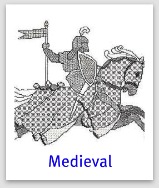
Explore the artistry of Eastern-inspired motifs, adding a touch of global culture to your embroidery.
Short on time? Our Weekender range features smaller projects that are perfect for quick yet satisfying stitching sessions.

Get into the festive spirit with Christmas-themed blackwork patterns. From snowflakes to holly, these designs bring holiday cheer to your embroidery, making them ideal for seasonal decor or heartfelt handmade gifts.
Explore a variety of motifs and stitches in these blackwork samplers. Ideal for both beginners and seasoned stitchers, these patterns offer a beautiful way to practice techniques and create a striking, piece.
Assisi Style Blackwork Needlecases
Inspired by the Assisi technique, these patterns are designed for needlecases and feature negative-space motifs that create a striking visual effect. A practical yet beautiful project for any blackwork enthusiast.
Pay homage to the craft of needlework itself with designs featuring traditional lacemakers and stitchers. These intricate patterns are a tribute to artisans past and present, perfect for adding a touch of history to your creations.
Celebrate the charm of Victorian kitchens with playful cats woven into classic blackwork scenes. These whimsical patterns are a delight for animal lovers and vintage enthusiasts alike.
Capture the charm of traditional windmills with these intricate designs. Each pattern brings a sense of movement and nostalgia, perfect for adding a rustic touch to your embroidery collection.
Celebrate the iconic Fleur de Lis symbol with these timeless blackwork patterns. Elegant and versatile, they add a touch of classic French design to any project, perfect for framing or as decorative accents.
Get Started with Blackwork Today!
With its rich history, versatility, and timeless appeal, blackwork is an art form waiting to be explored. Jump into the lessons and discover the joy of creating something special.
Stay connected between projects
If you’d like occasional updates from my embroidery room, including new patterns, gentle tips, and little things I think you might enjoy, you’re warmly invited to join the Stitchin’ Times newsletter.
No pressure. Just a friendly note now and then to keep you inspired.
